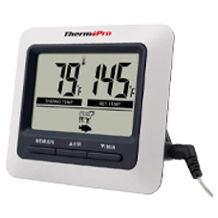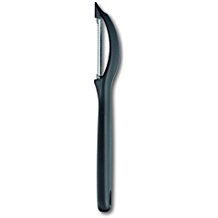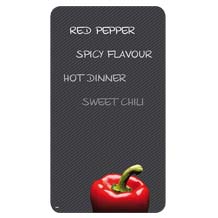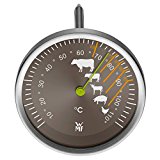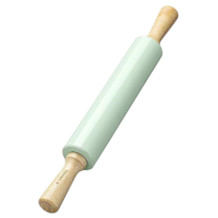Knife block purchasing advice: how to choose the right product
- What You Need to Know
- Knife blocks allow you to store your knives safely within reach.
- They can be made of different materials, such as wood, plastic, or stainless steel.
- A complete set of knives is often included.
- The knives are inserted into slots, brush inserts, or attached to a magnet.
Store knives safely and within reach
Not every knife is designed for every type of food. For instance, just because a knife is capable of cutting meat does not mean it is suitable for it. Even all-purpose knives, the knife all-rounders, shouldn’t be used for everything such as for cutting bread. Of course, you don’t need every conceivable type, especially if you don’t cook much or often. However, a complete kitchen should be equipped with at least three or four different knives.
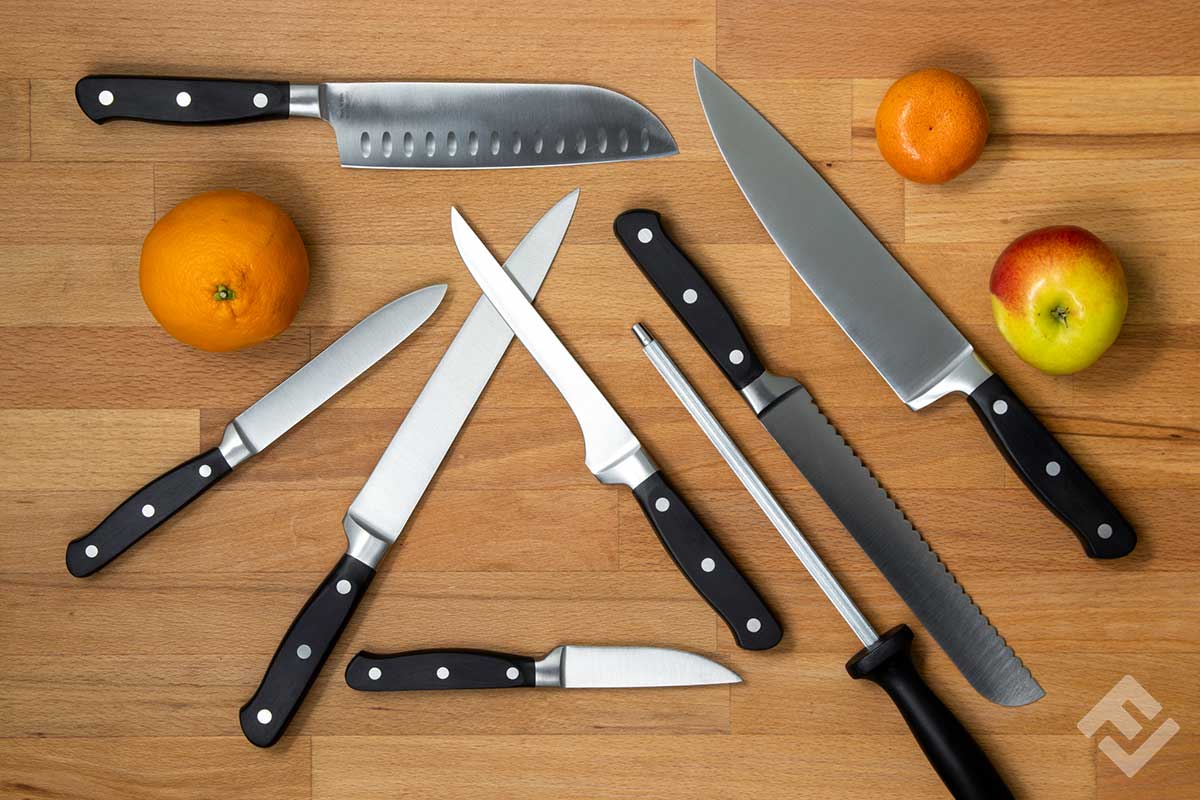
With the exception of a few dull knife types such as dinner knives, knives – especially the high-quality ones – are very sharp, which is why they need to be stored properly. Simply storing them loosely in a drawer is not advisable. After all, you will first have to rummage through numerous pieces of cutlery until you find the knife you want. This can lead to injury especially with unsheathed sharp knives. In addition, the constant rubbing and bumping of the blade against other objects is harmful to it. In this case, you will need to sharpen or even replace your knives more often.
Instead, a knife block is recommended for storing sharp knives. This is usually a solid wooden block with slots of different sizes into which you insert the knife blades. This way, a knife block ensures safe storage, while also benefiting the longevity of the blades. The handles of the knives are easily accessible.
Chekhov’s knife block
The term “Chekhov’s gun” describes a dramatic principle from literary studies and means that every element mentioned in a story must play a role in it. Thus, if there is a gun hanging on the wall, it should be used in the course of the plot. This concept is also applicable to knife blocks in horror or crime films. If the camera is pointed at a kitchen counter where a knife block is visible, the easily accessible knives will likely later be used for assault or self-defense.
Knife blocks and alternatives
In a knife block, you store your knives not only safely and gently, but also within easy reach. In addition to the classic version, there are also a magnetic knife holders and magnetic knife blocks.
The knife block
A knife block is a rectangular block made of wood, stainless steel, plastic, acrylic, or concrete, which is usually slightly angled to make it easier to pull out and insert knives. The block either has slots of different lengths to accommodate different blade sizes, or it has a brush insert. The latter has the advantage that the blade does not have to fit the slot.
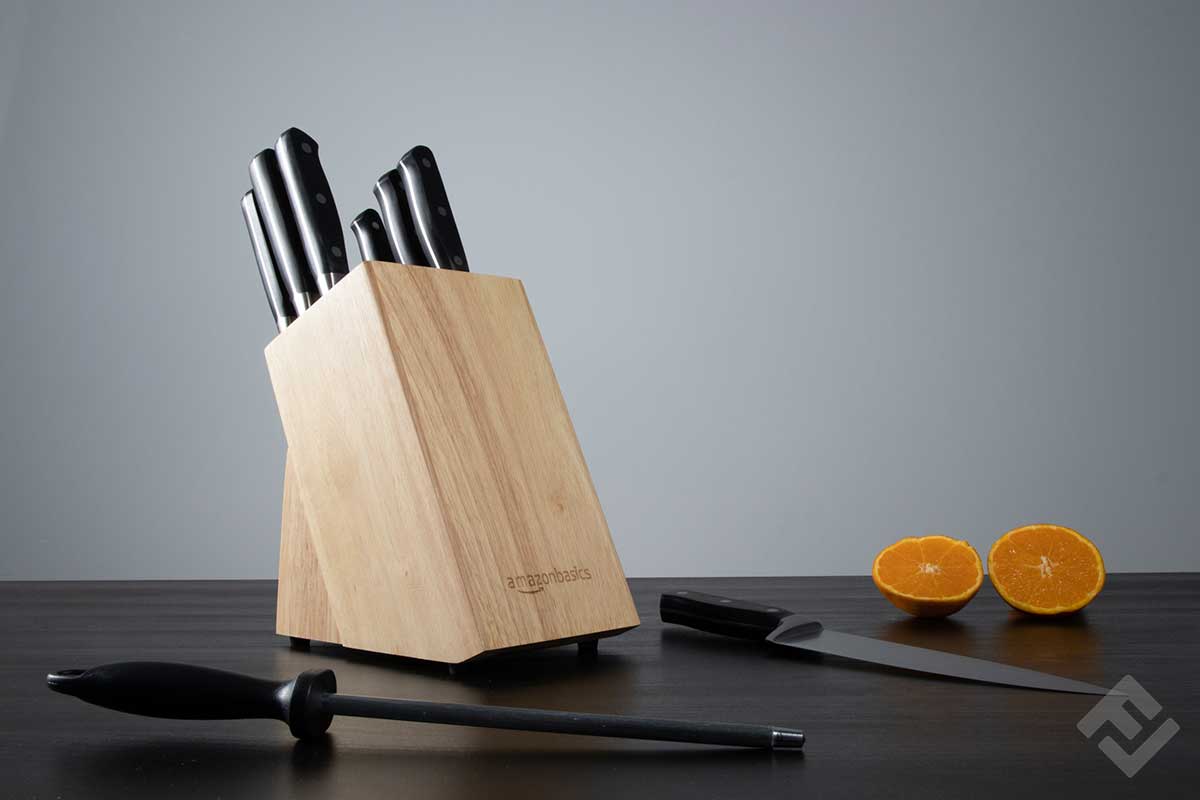
Often, a complete set of knives is included in the purchase of a new knife block. But if you already have enough knives, you should make sure that the block can accommodate all of them. First and foremost, a knife block is used for stable and safe storage. Since the blades slide into the block, there is no danger of accidentally cutting yourself. A knife block also keeps the blades sharp for a long time.
However, you cannot always tell from the handle which knife is which. You may therefore have to lift a few knives halfway until you find the right one. In addition, the number of knives that fit in the knife block is limited. For very small kitchens, a knife block may also take up too much space. What is more, cleaning a classic model made of wood is somewhat complicated. However, if you always put your knives in the block clean and dry, you will hardly have to clean it.
Advantages
- Safe
- Blade-preserving
- Practical
- Aestheticly pleasing
- Complete knife set often included
Disadvantages
- Only suitable for a certain number of knives
- Too large for some kitchens
- Knife type not always recognizable from the handle
The magnetic knife holder
A magnetic knife holder is a useful alternative to a knife block. Since it is mounted on the wall, it does not take up any space on the kitchen counter. In principle, it is a slat made of wood or stainless steel that is equipped with a magnet. Due to their steel blades, the knives stick to the magnet. A magnetic knife holder is not only space-saving, but also flexible, since it can be extended as required by adding more holders. This type of storage is also easy on the blades. As long as it is made of metal, any type of knife or other cutlery can be hung on them – the shape does not matter either. Additionally, you can also see clearly which utensil you want to reach for.
However, the magnetic knife holder is a bit harder to set up than a knife block which is simply placed on the kitchen counter. In addition, the magnet may be too weak for some knives or, conversely, the knives may be too heavy. In this case, the knives could fall off which is dangerous for anyone working in the kitchen and could possibly damage the blades or the kitchen counter. Since the blades are not covered, the risk of injury is also higher than with a knife block. Finally, a magnetic holder cannot be used with ceramic knives.
Advantages
- Space-saving
- Discernible knives
- Can be extended with other knife holders
- Blade-preserving
Disadvantages
- Installation effort
- Hold not guaranteed
- Risk of injury
- Not suitable for ceramic knives
The magnetic knife block
A magnetic knife block is a combination of a knife block and a magnetic knife holder. In its shape, it resembles a classic knife block, but instead of slots, it has a large magnetic surface to which metal blades are attached.
Since the magnetic knife block is a free-standing object, you can just place it wherever you deem appropriate. However, it takes up more space. Provided it is made of metal, any cutlery can be hung on the block regardless of its shape. Similarly to the magnetic knife holder, however, this storage method poses an increased risk of injury. After all, a block can tip over. The safest way to use it is to hold the block with your free hand whenever you remove a utensil. Especially if you live with children, make sure you keep the magnetic knife block out of their reach. Another disadvantage is that you cannot attach ceramic knives or knives that are too heavy to the magnetic knife block.
Advantages
- Easily set up
- Visible blades
- Suitable for all shapes
Disadvantages
- Takes up space
- Injury risk
- Unsuitable for heavy knives and ceramic knives
Materials
Wood is the most common material for knife blocks. However, they are also made from many other materials. These include stainless steel, plastic, Wood is the most common material for knife blocks. However, others can also come into play. These include stainless steel, plastic, acrylic, and even concrete. The material has a strong influence on the weight, aesthetics, and how easy the object is to clean.
Wood
Most knife blocks are made of solid wood. Walnut, oak, beech, or bamboo are often used in the manufacturing process. Wood has a warm, traditional aesthetic. Since the material is relatively soft, it is gentle on the blades. In addition, wood is usually free of harmful substances. The biggest disadvantage of wooden blocks is that they are difficult to clean, especially if they have slots. As a rule, wooden knife blocks weigh between two and four kilograms.
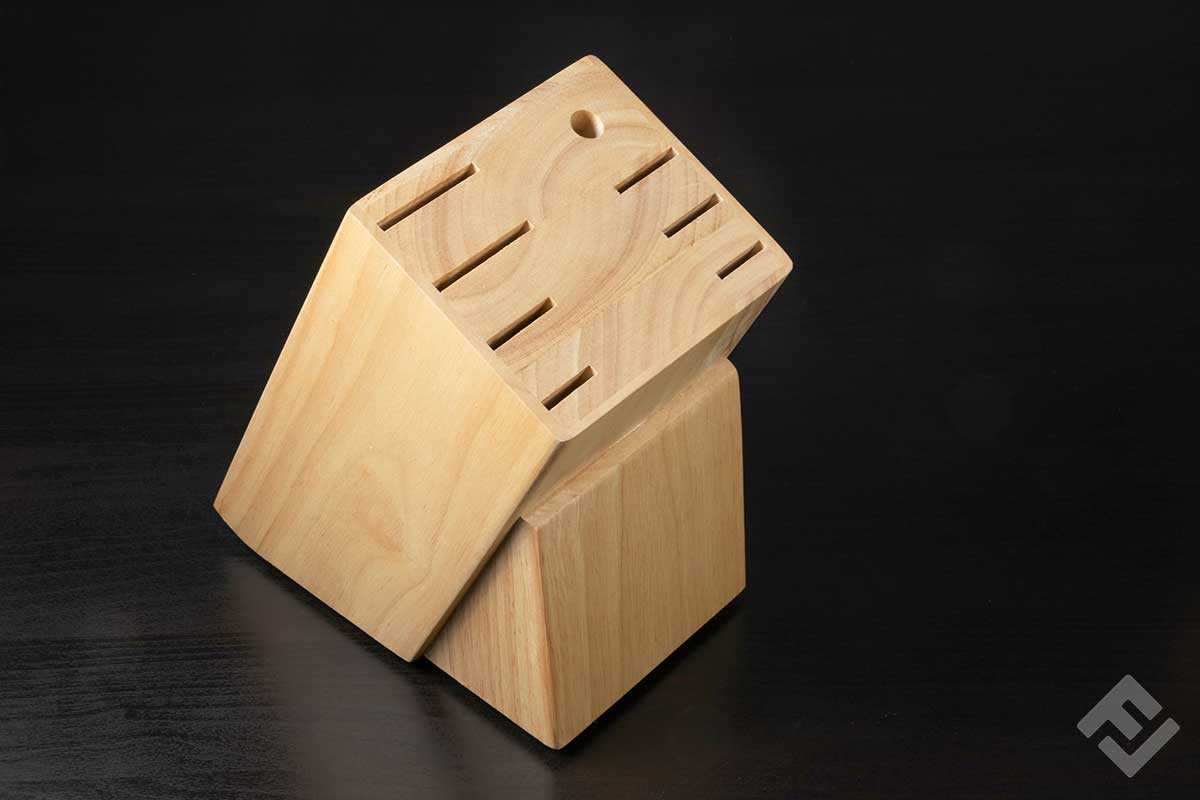
Stainless steel
Stainless steel knife blocks have a modern look. The material is robust and durable. Stainless steel models weigh more than wooden knife blocks, which makes them more stable. On the other hand, such models are usually a little more expensive. Another problem is that the hard material dulls the blades in the long run, meaning that they need to be sharpened more often. Unfortunately, not all stainless steel knife blocks are dishwasher safe. Since stainless steel blocks are not always dishwasher safe, the delicate surface may rust and become unsightly through repeated cleaning in the machine.
Plastic
Plastic models are usually the cheapest. They are easy to clean in the dishwasher. However, the material is not as robust and durable. Although the soft plastic is gentle on the blades, it is relatively light, which has a negative impact on the stability of the knife block. In addition, plastic sometimes contains softeners that are harmful to your health.
Acrylic
Acrylic blocks have an elegant design. They are relatively inexpensive and light, which makes them less stable and robust than, for example, blocks from stainless steel or wood. Thanks to the transparent surface, acrylic knife blocks are the only designs with slots where you can see the blades.
Concrete
The latest trend is knife blocks made of concrete. The material looks minimalist and solid in equal measure. This makes it a good fit for modern households. Concrete knife blocks are robust and durable. Due to their heavy weight, they are also extraordinarily stable. However, the hardness of the material means that the blades wear out more quickly over time. Since concrete knife blocks are rare, they turn out to be relatively expensive, even though concrete is not an expensive material.
Where the blade goes
The way knives are stored in or on a knife block has a strong influence on the number and shape of knives and other cutlery that it can accommodate. For this, there are three main options, namely, slots, a magnet, or a brush insert.
Slot
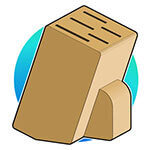
Slots come in a fixed size and number. If you want to acquire a complete set of knives with the knife block, knife blocks with slots are a very good choice. You can choose how many or which knives you need and make a purchase decision accordingly. If you already have enough knives, some research is required. Before you buy one, you need to make sure that the number and size of the slots are sufficient to accommodate your knives.
Magnet
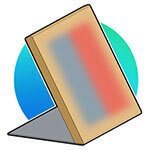
Magnets can support any cutlery that is not too heavy and is at least partly made of metal. It is important to ensure that the surface is large enough for all your knives. Magnets are more flexible than slots. However, magnetic blocks or strips cannot hold ceramic knives and pose a higher risk of injury. After all, the blades are not covered or sheathed and can injure you if handled carelessly.
Brush insert
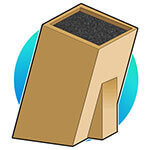
With the brush insert, knives and other utensils are inserted into the block from above. The blade sinks between the bristles and only the handle is visible. Brush inserts With the brush insert, knives and other utensils are inserted into the block from above. The blade sinks between the bristles and only the handle is visible. Brush inserts are flexible because you can insert your utensil wherever there is space. All you have to do is make sure that the knife block is large enough for all your knives. However, if you store too many blades in the brush insert, the blades may bump into each other and wear out over time.
Other purchase criteria
In addition to the material of manufacture and the type of knife block, features such as its dimensions, stability, and features should factor into the purchase decision. It must guarantee a level of safety as well as meet your storage requirements.
Safety
Since sharp objects are stored in a knife block, special attention must be paid to safety. It is essential that the knife block doesn’t tip over. It must also be able to withstand light impacts. For this, it needs a certain weight. The heavier the block, the less likely it is to topple. It must also be non-slip. Rubber feet or other rubberized surfaces can ensure slip resistance. Last but not least, a model with a child safety lock is recommended for households with small children or pets. When this comes into effect, you cannot remove the knives and they will not fall out even if the knife block tips over.
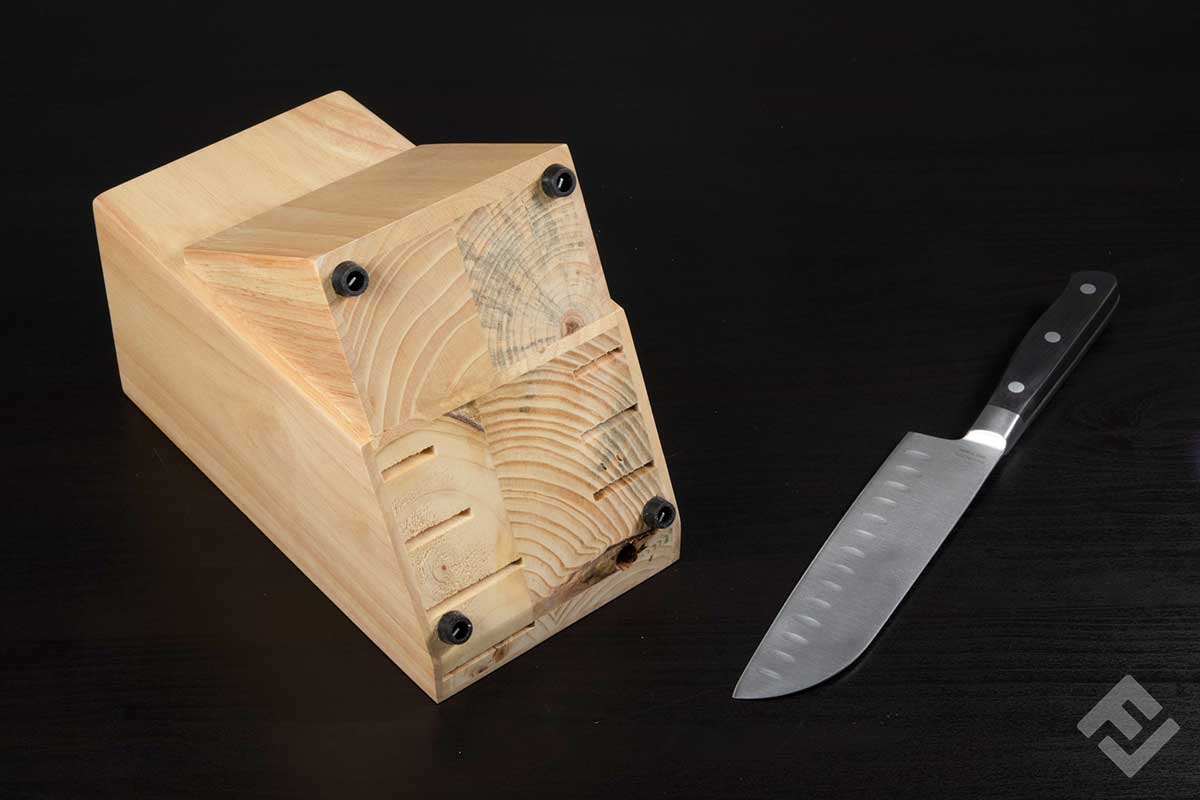
Size and weight
The size of the knife block has a significant influence on the number of knives that can be stored in it. The number of slots and the dimensions of the surface of the brush insert or magnet determine how many knives fit in or on it. The larger the block, the more material is used in its manufacture, which of course affects the weight.
A heavy knife block is usually safer. The decisive factor for the weight is above all the material. Plastic and acrylic are the lightest, while stainless steel and concrete are the heaviest. The weight of wood, the most common material, usually lies somewhere between the two extremes. Knife blocks usually weigh between 1.5 and 5.0 kilograms.
Features
You have to decide whether you want to buy a knife block with or without a matching knife set. A complete set of knives, especially if they are high-quality, increases the price considerably. However, the offer is extremely practical for a new household, since you are spared the search and purchase of different knives. Otherwise, most knife blocks are very similar. However, some have slots or other storage options for kitchen scissors or a sharpening rod.
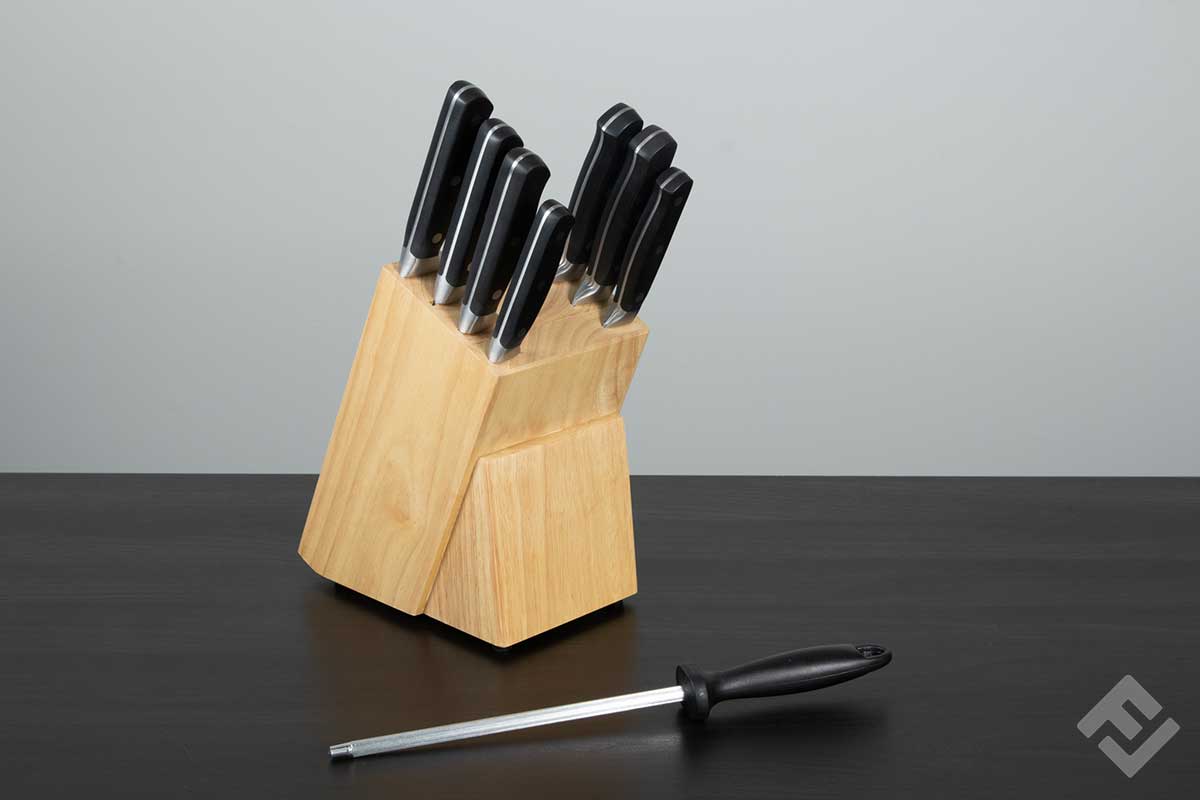
Cleaning
Provided you insert the knives into the knife block in a clean condition, it will hardly get dirty from the inside and therefore does not need to be cleaned often. To keep the outer surface free of dirt as well, you should not store the knife block too close to the cooker top or cutting surface. After all, a lot of splashing liquid from sauces and other juices can occur there. Sooner or later, you will still have to clean the knife block. Plastic, acrylic and concrete are very easy to clean because the materials are dishwasher-safe. Stainless steel and wooden blocks should be cleaned by hand.
Images 1–8: © FinalCheck

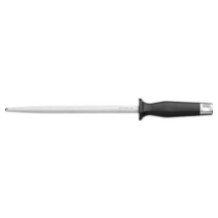
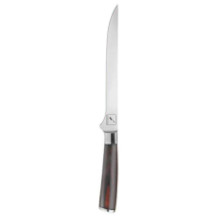
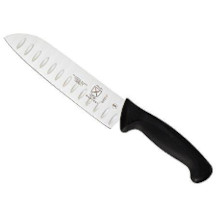

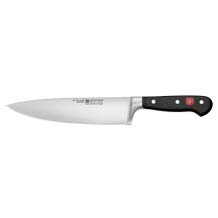
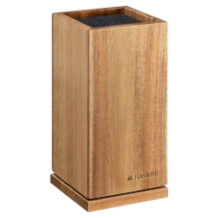

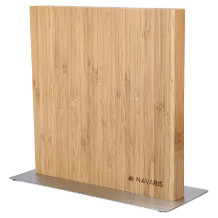





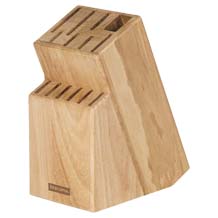

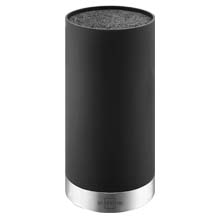
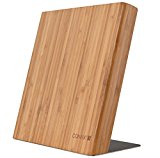

 59 reviews
59 reviews
